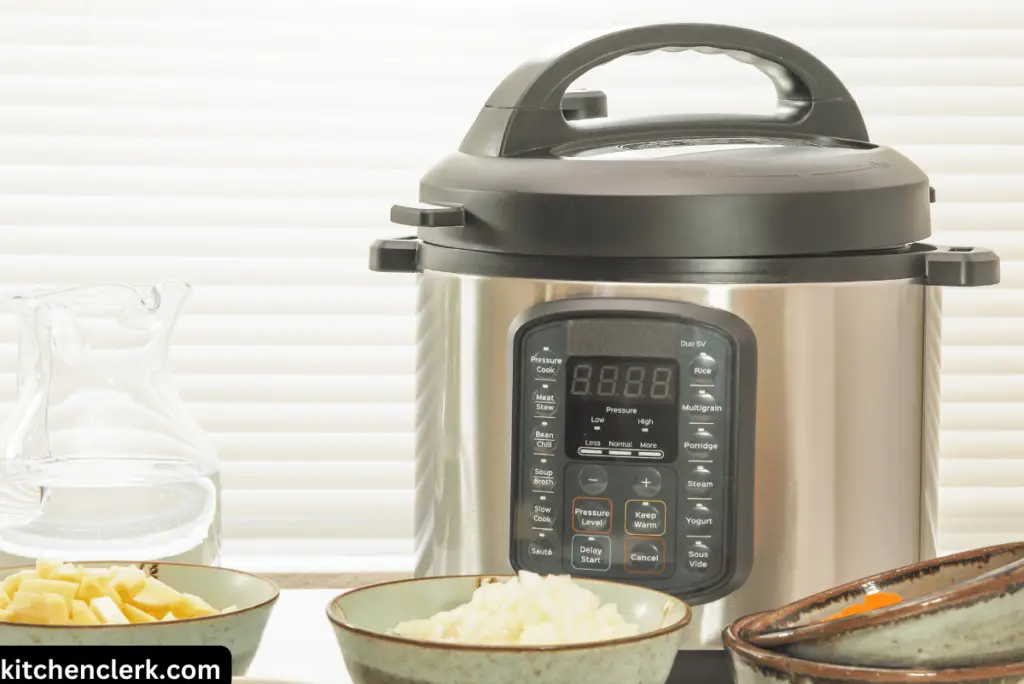Over the years, I have seen my fair share of pressure cooker failures. While pressure cookers are wonderful tools for quickly cooking meals, they are not immune to problems.
From steam leaks to error codes, pressure cooker failures can be frustrating and potentially dangerous if not appropriately addressed.
In this article, I will discuss some common pressure cooker failures and provide you with practical solutions to fix them.
5 Pressure Cooker Failures and How to Fix Them

1. Steam leaks
One of the most common issues with pressure cookers is steam leaks. If you notice steam escaping from the sides or top of your pressure cooker, it can significantly impact the cooking process and result in undercooked food.
The most common cause of steam leaks is a faulty or worn-out sealing ring. Over time, the sealing ring can lose its elasticity and fail to create a proper seal.
Solution: To fix this issue, you will need to replace the sealing ring. Refer to your pressure cooker’s manual for specific instructions on how to do this.
Ensure that you purchase a replacement sealing ring that is compatible with your pressure cooker model. Once you have installed the new sealing ring, make sure it is properly seated and fits snugly in the lid.
2. Overheating
Pressure cookers rely on precise temperature control to function correctly. If your pressure cooker is overheating, it can result in burnt food or even damage to the cooker itself.
Overheating can be caused by a variety of factors, including a faulty thermostat or a clogged steam release valve.
Solution: Start by checking the thermostat of your pressure cooker. Use an accurate kitchen thermometer to measure the temperature inside the cooker while it is in use.
If you notice a significant discrepancy between the measured temperature and the settings on the control panel, it may be time to replace the thermostat.
Additionally, inspect the steam release valve for any clogs or blockages. Clean it thoroughly using a soft brush or pipe cleaner to ensure proper steam release.
3. Error codes
Many modern pressure cookers are equipped with digital displays and error code systems to alert you to any malfunctions.
However, these error codes can sometimes be confusing or cryptic, leaving you unsure of how to resolve the issue. Common error codes include “E1” (pressure sensor malfunction) and “E5” (heating element failure).
Solution: When you encounter an error code, the first step is to consult your pressure cooker’s manual. It should provide a list of error codes and their corresponding solutions.
In some cases, a simple reset of the cooker may resolve the issue. If the problem persists, you may need to contact the manufacturer’s customer service or bring the cooker to a qualified technician for repair.
4. Pressure build-up issues
A pressure cooker’s primary function is to build up and maintain pressure to cook food quickly. If you notice that your pressure cooker is not building up sufficient pressure or not holding it properly, it can result in unevenly cooked or undercooked food.
Solution: Start by checking the pressure release valve and the sealing ring. Ensure that the sealing ring is properly installed and seated and that the pressure release valve is not blocked.
If these components are functioning correctly, it may be a problem with the pressure regulator. Consult your pressure cooker’s manual to determine how to adjust or replace the pressure regulator if necessary.
5. Slow pressure release
After cooking, it is essential to release the pressure from the cooker before opening it. If you notice that the pressure is releasing slowly or not at all, it can be a cause for concern. A malfunctioning pressure release valve or inadequate venting can cause slow pressure release.
Solution: First, check the pressure release valve to ensure it is not clogged or blocked. Clean it thoroughly and ensure it moves freely.
If the problem persists, replacing the pressure release valve may be necessary. Adequate venting is also crucial for proper pressure release. Make sure that the venting mechanism, such as a steam release knob or button, is not obstructed or damaged.
In Conclusion
Pressure cooker failures can be frustrating, but they are not insurmountable. By identifying and addressing common issues such as steam leaks, overheating, error codes, pressure build-up issues, and slow pressure release, you can effectively troubleshoot and fix problems with your pressure cooker.
Always consult your pressure cooker’s manual for specific instructions and, when in doubt, seek assistance from the manufacturer’s customer service or a qualified technician. Keep your pressure cooker in good working condition to enjoy efficient and safe cooking experiences.
Have you ever encountered any pressure cooker failures? How did you resolve them? Share your experiences and tips below.
